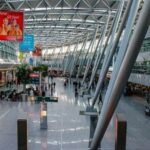In late March, the National Economic and Development Authority (NEDA) revealed the government’s list of 194 priority infrastructure projects, also known as Infrastructure Flagship Projects (IFPs), under the Marcos administration’s Build-Better-More (BBM) program.
The list includes 71 projects carried over from previous administrations, like the MRT-7 project and Bataan-Cavite Interlink Bridge. It introduced 123 additional projects, some of which are currently being implemented, such as the Cavite-Laguna Express (CALAX) and the installation of additional segments to the North Luzon and South Luzon Expressways. The projects are biased towards transportation infrastructure, which consists of 71 out of the 194 IFPs.
Despite the promise of equitable national development, an initial tally of the BBM shows that much like its predecessor Build Build Build (BBB), it continues to be centered in NCR, Central Luzon, and CALABARZON. Overall, there are 68 projects for these regions, which is higher than the number of nationwide projects (41).
The Philippine government has a repetitive narrative when it comes to infrastructure – that it will “revitalize the economy” and “create more jobs” or that the government is “Building more for better lives”. These claims about infrastructure projects have been repeated for so long that they seem like obvious benefits, but history shows that this is not always the case.
Expensive
With infrastructure side by side with debt servicing and military modernization as its budget priorities, the government looks outward to finance its projects. Out of the 194 IFPs, 79 are funded by official development assistance (ODA), 45 by public-private partnerships (PPPs), 66 through the national budget or the General Appropriations Act (GAA), and two by hybrid PPPs. Only the funding sources of two other projects have yet to be determined.
ODA funding can be in the form of loans below commercial rates or outright grants. Such money is supposedly used to achieve development targets. In 2021 alone, the Philippines had US$30.2 billion in loan commitments. This included 107 loans distributed across different implementing agencies, 44 of which are for Department of Transportation (DOTr and Department of Public Works and Highways (DPWH) with a total value of Php13.1 billion (40.5% of the total ODA profile).
Borrowing money to support development efforts is not wrong but it’s important to note that foreign lenders give ODA most of all as part of their countries’ foreign policy objectives and perceived self-interest rather than out of any altruism. For instance, Japan has long been the country’s biggest ODA provider, and the overwhelming bulk from it has gone to infrastructure to support Japanese investment in the country if not outright spent on Japanese firms and contractors.
Also, among the ways lenders benefit from ODA is giving this as “tied aid” which restricts the loan’s usage to buying equipment or spending on technical assistance from the donor country.
Kaliwa Dam, meanwhile, got a US$283.2 million China loan for its construction. China Energy Engineering Corporation Limited was selected as contractor for the project.
Borrowing and privatizing and borrowing to support privatizing has become a spiral ingrained in the budget process. ODA as well as development financing from multilateral institutions such as the World Bank, International Monetary Fund (IMF) and the Asian Development Bank (ADB) and from bilateral sources are oftentimes onerous loans that do not really result in broad-based development.
For instance, the country is currently paying relatively higher interest rates on Chinese loan commitments for projects under the Duterte administration which have carried over in Marcos Jr’s list of IFPs, such as the New Centennial Water Source (NCWS) – Kaliwa Dam project and the PNR South Long Haul. In 2019, the country received a US$430.99 million loan from China for the above-mentioned projects, paying a 2% interest rate for a tied concessional loan and 3% interest rate for a tied preferential buyer’s credit loan, which will both last for 20 years with a 5-year grace period – a stark contrast to interest rates offered by Japan’s Special Term for Economic Partnership (STEP) loans (0.1%) and France’s soft loans (0.4%), among other loan sources. Historically, Chinese loans are more expensive than World Bank loans by 0.15 percentage points.
Meanwhile, PPPs are agreements between the public and private sector regarding the construction and operation of infrastructure that has traditionally been taken on by the public sector. Since the private sector is involved, projects become overly motivated by profit-generation which is the only thing that would incentivize them. Utilities and services with inelastic demand are put under the monopoly of the private sector, which will gouge the consumers with high prices to the extent of demand.
Unsolicited PPPs tend to primarily benefit the comprador economy. D.M. Consunji, Inc., for instance, was awarded the construction contract for the Php39-billion NLEX-SLEX Connector Road in 2019. On top of that, in the same year, San Miguel Corporation (SMC) expressed interest to construct and operate a bus terminal along the connector. Under the BBM, there are three other IFPs funded by unsolicited PPPs: the MRT-7 Project, New Manila International Airport in Bulacan, and Davao Sasa Port.
The NLEX-SLEX Connector is not the only IFP that SMC will benefit from. Some projects they were awarded the contract for include MRT-7, which costs Php77-billion to construct, and the controversial Php754-billion New Manila International Airport (NMIA) in Bulacan. SMC also owns SLEX, which plans on constructing a 66.74 km toll road from Batangas and Quezon; and a 417 km toll road from Quezon to Sorsogon.
Lastly, the Davao Sasa Port was originally proposed by Dennis Uy firm Chelsea Logistics and Infrastructure Holdings Corp., who lost Php2.53 billion in 2022. Now, Globalport 900 Inc. is eyeing the project’s management, operations, and maintenance. According to a disclosure form from the Philippine Stock Exchange (PSE), Globalport 900 is currently headed by Sheila Romero, wife of ex-deputy speaker Mikee Romero who was once the richest lawmaker in the House of Representatives.
Harmful
For large projects such as Kaliwa Dam, ecological damages are on a grand scale. The mega dam project threatens biodiversity with the forests and coastline of the project containing nearly 3,000 species of amphibians, birds, fishes, invertebrates, mammals, plants and reptiles. This includes three (3) critically endangered, 31 endangered, and 240 vulnerable species put at risk by the project, according to data from Haribon Foundation. Some 16,000 trees will also be affected by the mega dam’s construction, more than half of which are coconut trees while the rest are fruit bearing trees. Coconut trees are a big source of livelihood for farmers in Quezon.
Thousands of individuals are also being compelled to evacuate as a result of various government infrastructure projects. For example, the construction of the Kaliwa Dam is set to displace approximately 1,400 Agta-Dumagat-Remontado families from Quezon and Rizal, as reported by Katribu. Furthermore, the construction of the Php735 billion NMIA in SMC’s Bulacan Aerotropolis, which involves a highly detrimental reclamation project, poses a threat to around 700 fisherfolk families in Bulacan, jeopardizing their livelihoods. It is worth noting that the reclamation project has already resulted in the destruction of around 6,000 mangrove trees.
The significance of mangrove trees extends beyond their role in coastline protection. They also function as vital carbon sinks, capable of storing up to five times more carbon than tropical upland forests. The destruction of mangroves, as witnessed in the reclamation project mentioned earlier, contributes to the release of stored carbon dioxide, thereby exacerbating climate change. This loss not only compromises the natural coastal defenses provided by mangroves but also has wider implications for the global carbon balance.
Billions poured, millions poor
Are these infrastructure projects benefiting us so far? Despite the huge sums of money allotted for and spent on infrastructure projects, millions of Filipinos remain poor. When infrastructure expenditures were at its highest in 2021, at Php1.01 trillion, there were still 20 million Filipinos officially reported as in poverty – a figure that is nearly a quarter of the Philippine population.

Former President Rodrigo Duterte’s so-called legacy Build Build Build program, claimed to have generated millions of jobs for the construction industry. Yet while data from the Philippine Statistics Authority (PSA) shows construction employment generally increasing, most construction jobs in the country are contractual, short-term, or part-time – and, hence, usually low-paying, insecure and without benefits. From 2017 to 2019, the number of part-time workers in construction ballooned by 276,000 a year. When the pandemic lockdowns were imposed, the industry suffered major losses and lost 342,000 workers. Part-time work from 2016 to 2020 ranged from 57.1% to 59% of construction employment.
The government’s infrastructure programs did not seem to help improve workers’ incomes either – if anything, even showing a disconnect. Construction worker salaries declined in real value throughout the Duterte administration, despite gross value added (GVA) generally increasing. In 2016, the average monthly salary of construction workers was Php11,786, measured in 2018 pesos. This decreased by over Php54 in 2018 and then fell further to its lowest in six years of Php11,400 in 2020 – which was almost as low as construction workers were earning during the Noynoy Aquino administration.

Irrigation projects meanwhile appeared to have a negligible effect on farmers’ incomes. Despite Php380 million allotted to the National Irrigation Administration (NIA) in 2019 and 2020 for infrastructure, palay farmer income shrank in real value from Php30,206 per hectare in 2017 to Php18,065/ha in 2021. A similar trend can be seen for garlic farmers, whose income per hectare shrunk by 46.6% over that same period.
If the government is truly interested in building infrastructure that actually benefits the common Filipino, they must veer away from supporting mainly large corporate private interests. The government can choose to prioritize broad-based development, the public welfare and the environment over narrow elite profits.
It can start by putting a premium on social infrastructure such as for education, health and housing. Economic infrastructure should be more geared towards rapidly developing agriculture and the countryside. Overall, the infrastructure program must be premised on a strategic program that develops national industries for the people’s needs and the country’s improvement. The first steps can already be taken to developing more and more advanced manufacturing sectors.
Most of all, communities should not be displaced nor their livelihoods disrupted just to support narrow corporate profits. If the broader public welfare is served, there should be more than adequate compensation. The last thing the people already living on such low and vulnerable incomes is to be driven out of their homes. For national minorities, their right to ancestral land and self-determination must be respected.
Even when all the roads and highways have been built, there can be no genuine national development without a comprehensive plan on the Philippine economy that is based on the best interests of the Filipino people.###



